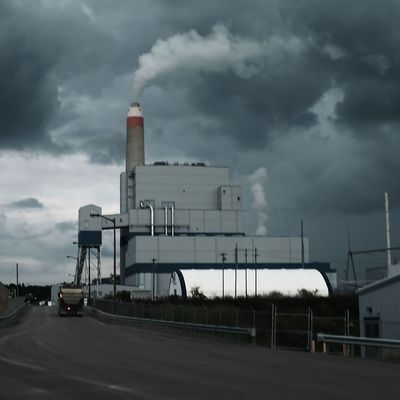
Donald Trump wants to let old coal plants remain in operation longer than existing federal rules would allow. To rationalize such a policy, the White House encouraged the Environmental Protection Agency (EPA) to produce research showing that the economic benefits of keeping the sky sooty would outweigh the cost to public health.
This proved difficult. On the one hand, the U.S. economy doesn’t actually have much need for coal-fired power plants. On the other, EPA scientists found that keeping these uniquely dirty energy providers on the grid will cause 1,400 more Americans to perish from premature deaths every year.
The EPA’s findings unsettled the White House. This president may believe in cutting “red tape,” but even Donald Trump isn’t comfortable arguing that victory in “the War on Coal” is worth 1,400 civilian casualties per annum. So the administration decided to bite the bullet, admit its error — and order EPA scientists to engineer a lower body count. As the New York Times reports:
The Environmental Protection Agency plans to adopt a new method for projecting the future health risks of air pollution, one that experts said has never been peer-reviewed and is not scientifically sound, according to five people with knowledge of the agency’s plans.
… The broader significance is that the new modeling method would most likely be used by the Trump administration to defend further rollbacks of air pollution rules. It has been a constant struggle for the E.P.A. to demonstrate, as it is normally expected to do, that society will see more benefits than costs from major regulatory changes.
The new methodology would assume there is little or no health benefit to making the air any cleaner than what the law requires.
In other words: The EPA has set an official legal standard for what qualifies as a “healthy” level of particulate matter in the air. But that level itself reflects industry group pressure and economistic cost-benefit analyses; in truth, there is no level of air pollution that is “healthy” for human beings. So when the agency estimates the public-health implications of regulatory changes, it acknowledges that levels of pollution within the “safe” range can still result in premature deaths.
The Trump administration has decided that this methodology is outrageous. As William L. Wehrum, the current EPA air-quality chief — and former fossil-fuel-industry lobbyist — explained to the Times:
[Wehrum] noted that, in some regulations, the benefits of reduced particulate matter have been estimated to total in the range of $40 billion.
“How in the world can you get $30 or $40 billion of benefit to public health when most of that is attributable to reductions in areas that already meet a health-based standard,” he said. “That doesn’t make any sense.”
Here, Wehrum displays contempt for the public’s intelligence. Arguing that there can’t possibly be large health benefits to reducing pollution in areas that already “meet the health-based standard” makes exactly as much sense as arguing that there can’t possibly be traffic deaths on roads where everyone obeys the speed limit. Sixty-five miles an hour may be the “safety-based standard” for highway driving in a legal sense — but that doesn’t mean that it’s “safe” in some absolute, scientific one. And the same goes for levels of particulate matter in the air. The question in both cases is how much death we’re willing to tolerate. The Trump administration’s problem is that it doesn’t wish to admit that it is willing to kill thousands of Americans to keep its coal-industry patrons in the black.
In 2020, Democrats should help the White House come clean.






























